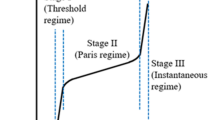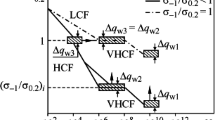
Overview
- Provides cost-effective and efficient approaches to obtain fatigue and fracture data
- Describes virtual testing techniques that prove adequate life in manufactured structural parts
- Written with a unique emphasis on applications beneficial to industry professionals
- Includes supplementary material: sn.pub/extras
Access this book
Tax calculation will be finalised at checkout
Other ways to access
About this book
Similar content being viewed by others
Keywords
Table of contents (13 chapters)
-
Front Matter
-
Back Matter
Bibliographic Information
Book Title: Virtual Testing and Predictive Modeling
Book Subtitle: For Fatigue and Fracture Mechanics Allowables
Editors: Bahram Farahmand
DOI: https://doi.org/10.1007/978-0-387-95924-5
Publisher: Springer New York, NY
eBook Packages: Engineering, Engineering (R0)
Copyright Information: Springer-Verlag US 2009
Hardcover ISBN: 978-0-387-95923-8Published: 01 July 2009
Softcover ISBN: 978-1-4899-8370-1Published: 29 November 2014
eBook ISBN: 978-0-387-95924-5Published: 29 June 2009
Edition Number: 1
Number of Pages: XXIII, 407
Topics: Solid Mechanics, Characterization and Evaluation of Materials, Classical Mechanics, Automotive Engineering, Solid Mechanics



